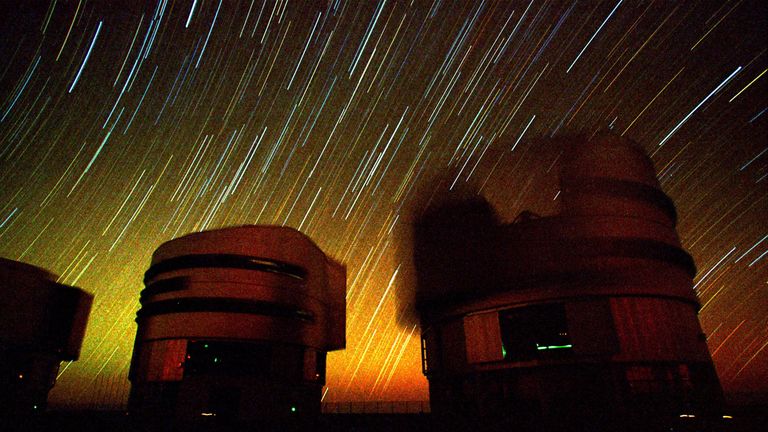Supermassive black hole found to be 40 billion times bigger than the Sun
The black hole is 10,000 times larger than the one thought to be in our own Milky Way galaxy.
Wednesday 7 August 2019 14:52, UK
A supermassive black hole has been found to be up to nine times larger than previously expected - making it one of the biggest-ever discovered.
The black hole in the Holmberg 15A galaxy has a mass nearly 40 billion times larger than the Sun and is the biggest to be measured using a method called direct dynamical detection.
In comparison, images recently captured of another one in the centre of the M87 galaxy showed it was 6.5 billion times bigger than the Sun.
Our galaxy, the Milky Way, is likely to have its own supermassive black hole with an estimated mass of around four million times larger than the Sun.
A black hole is a region of space which has a gravitational field so strong that no matter or radiation can escape.
The new finding in Holmberg 15A is 10,000 times bigger than that, and the updated size is down to a new way of measuring mass that included mathematics and a telescope with state-of-the-art technology.
Holmberg 15A is the brightest cluster galaxy in the Abell 85 grouping of galaxies, which is around 700 million light-years away from Earth.
Although it is not the largest black hole ever discovered, "this is the most massive black hole with a direct dynamical detection in the local Universe," said the authors.
They highlighted how Holmberg 15A was analysed using "orbit-based, axisymmetric Schwarzschild models" and "new high-resolution, wide-field spectral observations".
The observations were made using the Very Large Telescope (VLT) and the multi-unit spectroscopic explorer, which captures and measures images of stars in space
The explorer is located at the VLT at the European Southern Observatory in Chile, which is used by 16 countries including Germany and the UK.
Physicist Kianusch Mehrgan and her colleagues have highlighted the supermassive black hole was also much larger than previous estimates.
"The supermassive black hole of Holmberg 15A is not only the most massive one to date, it is also four to nine times larger than expected," said the team.
The largest black hole measured to date is TON 618, which is 10.37 billion light-years from Earth and is said have a mass 66 billion times bigger than the Sun.
A supermassive black hole is the largest formal classification for black holes, measuring hundreds to billions of times larger than the Sun.
Some astronomers have started using the term "ultramassive" for black holes which have a mass 10 billion or more times larger than our nearest star.
It has been suggested that supermassive black holes are found at the centre of most galaxies, such as our own, the Milky Way galaxy.
Our galaxy likely contains its own supermassive black hole near the border of the constellations of Sagittarius and Scorpius. Its location is known as Sagittarius A*.
The research has been submitted to The Astrophysical Journal.





